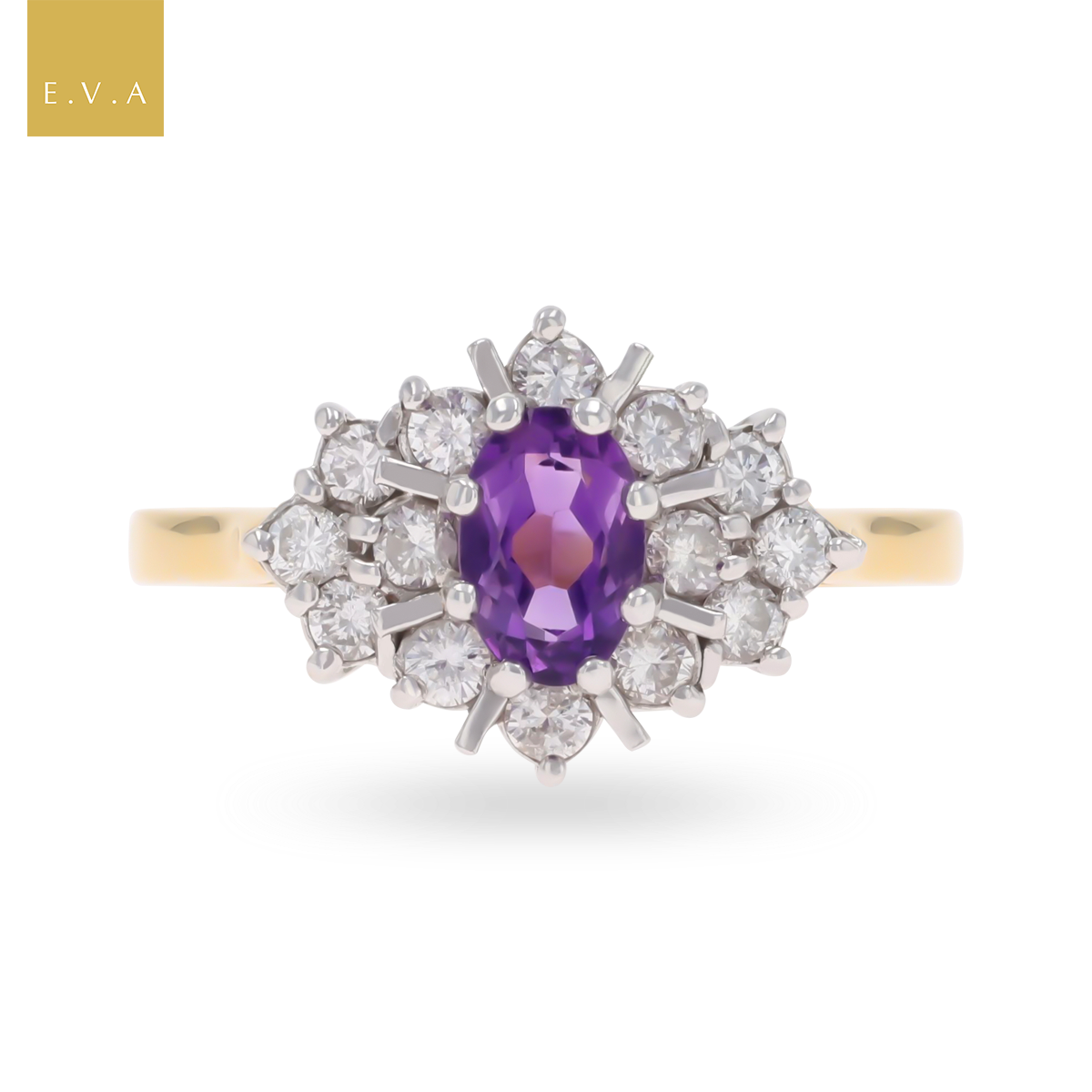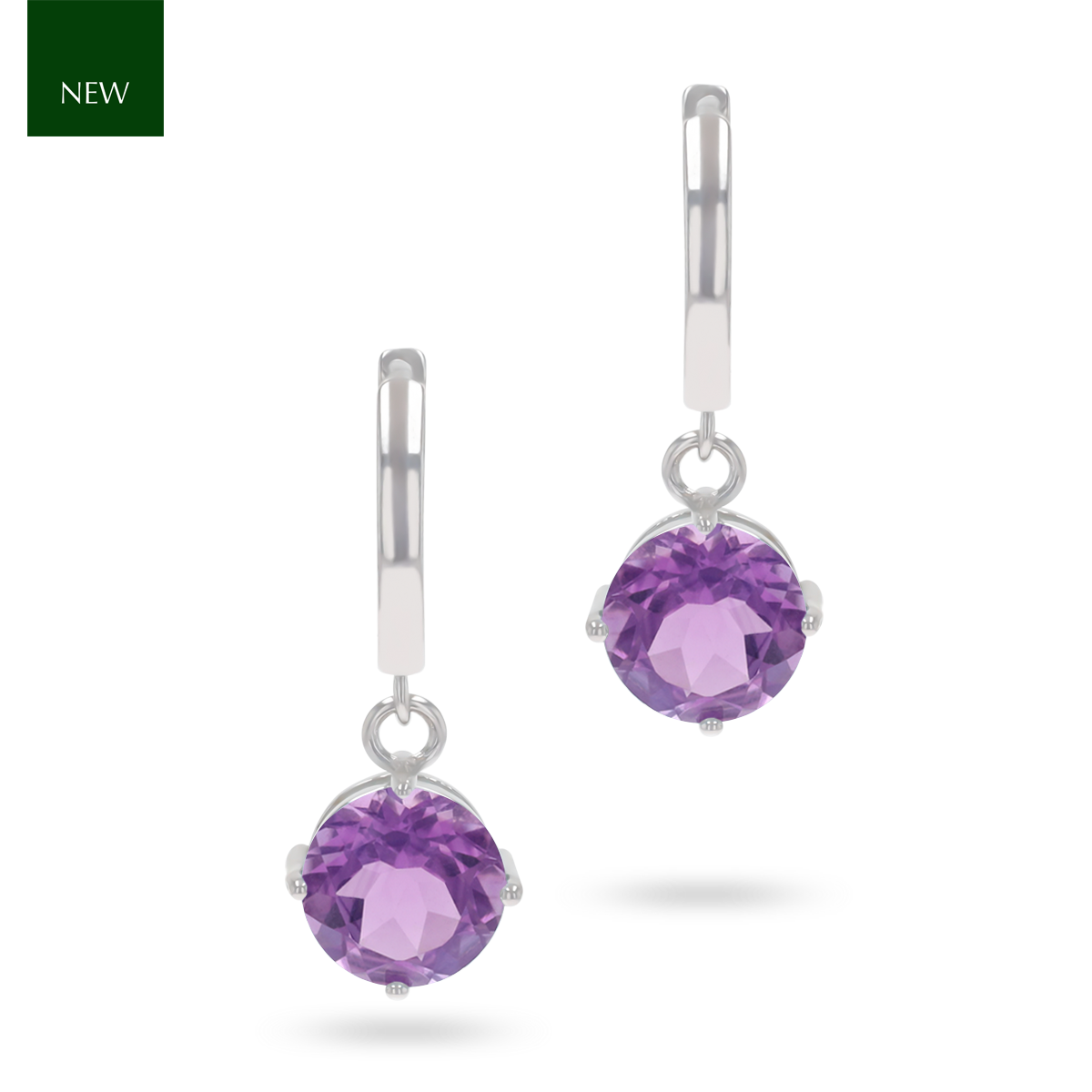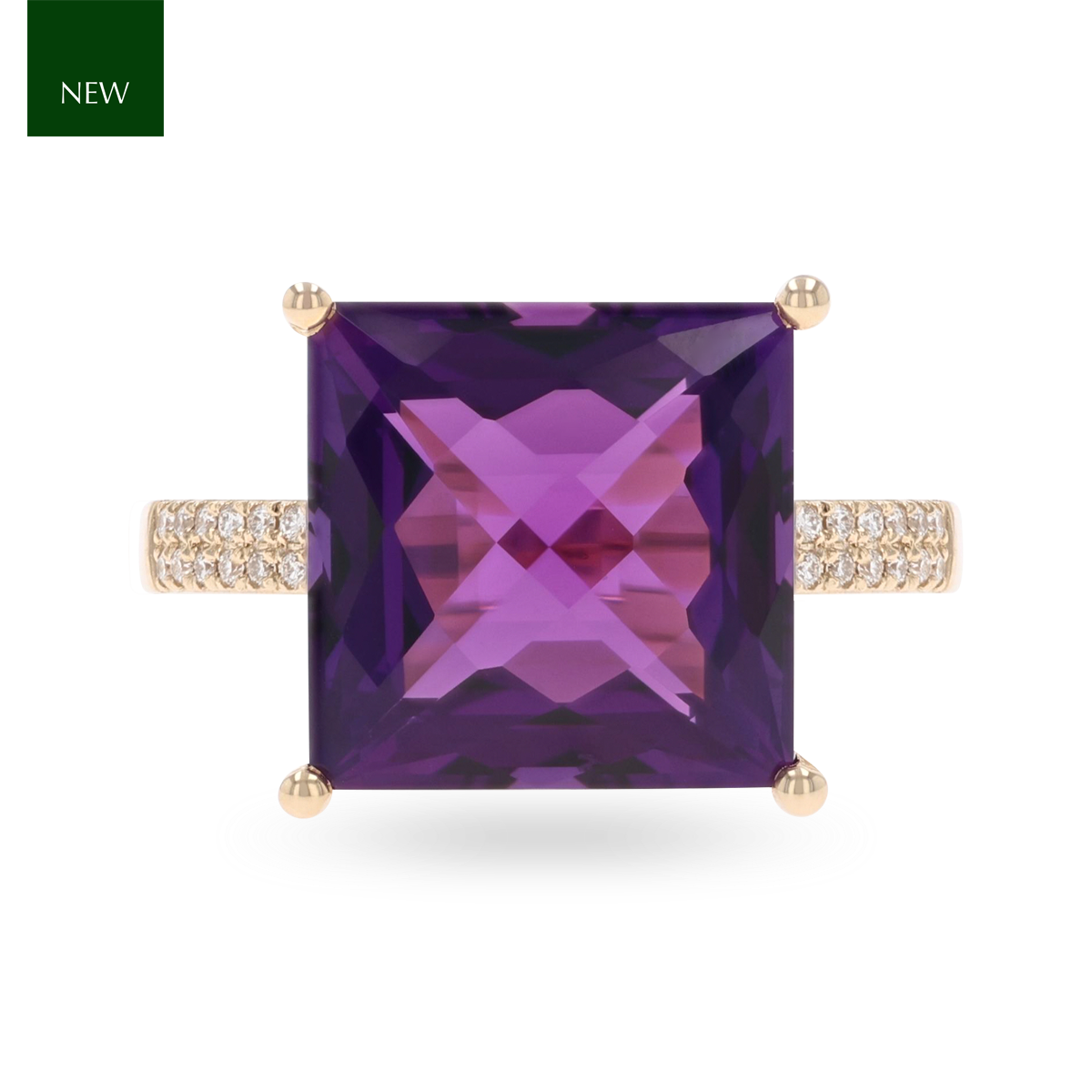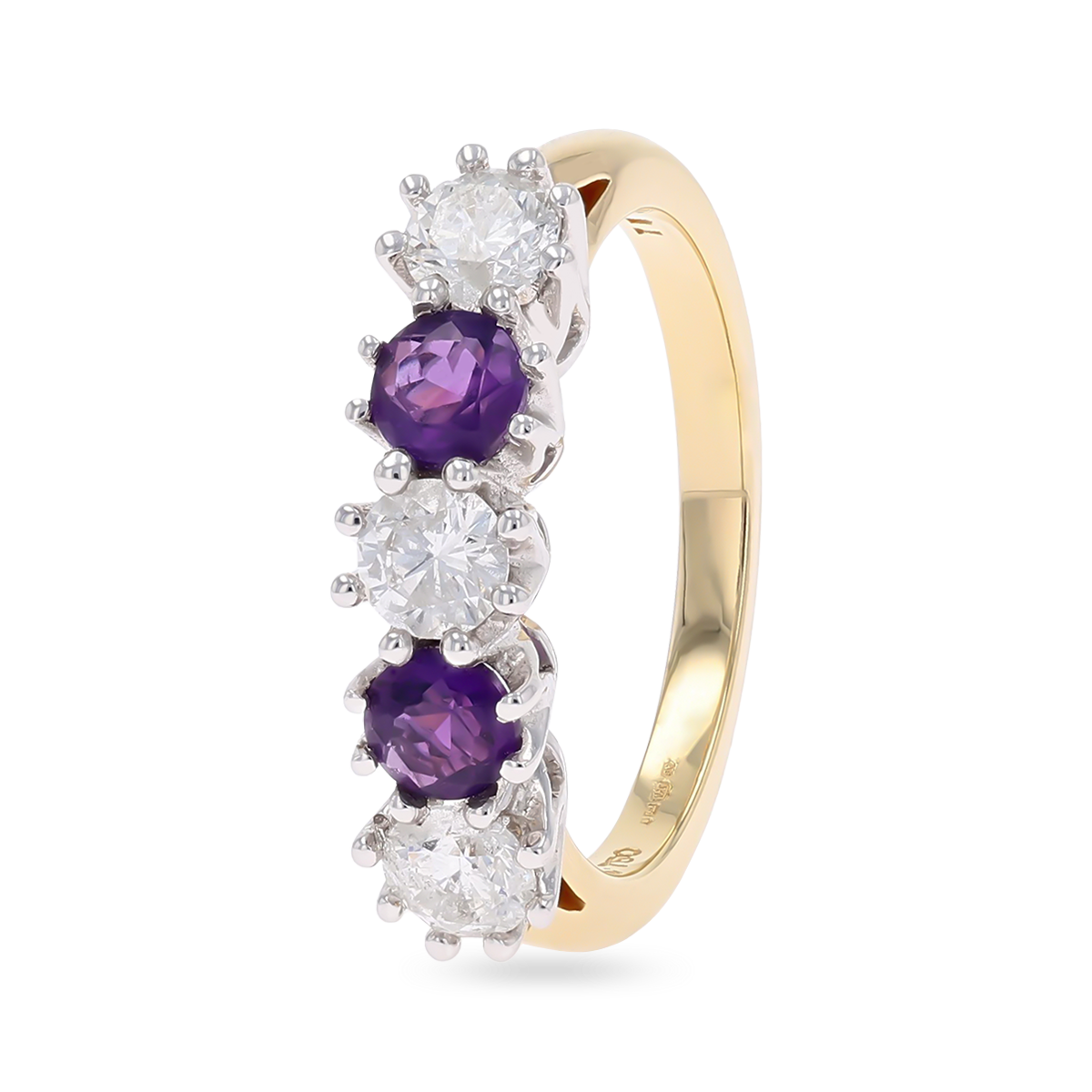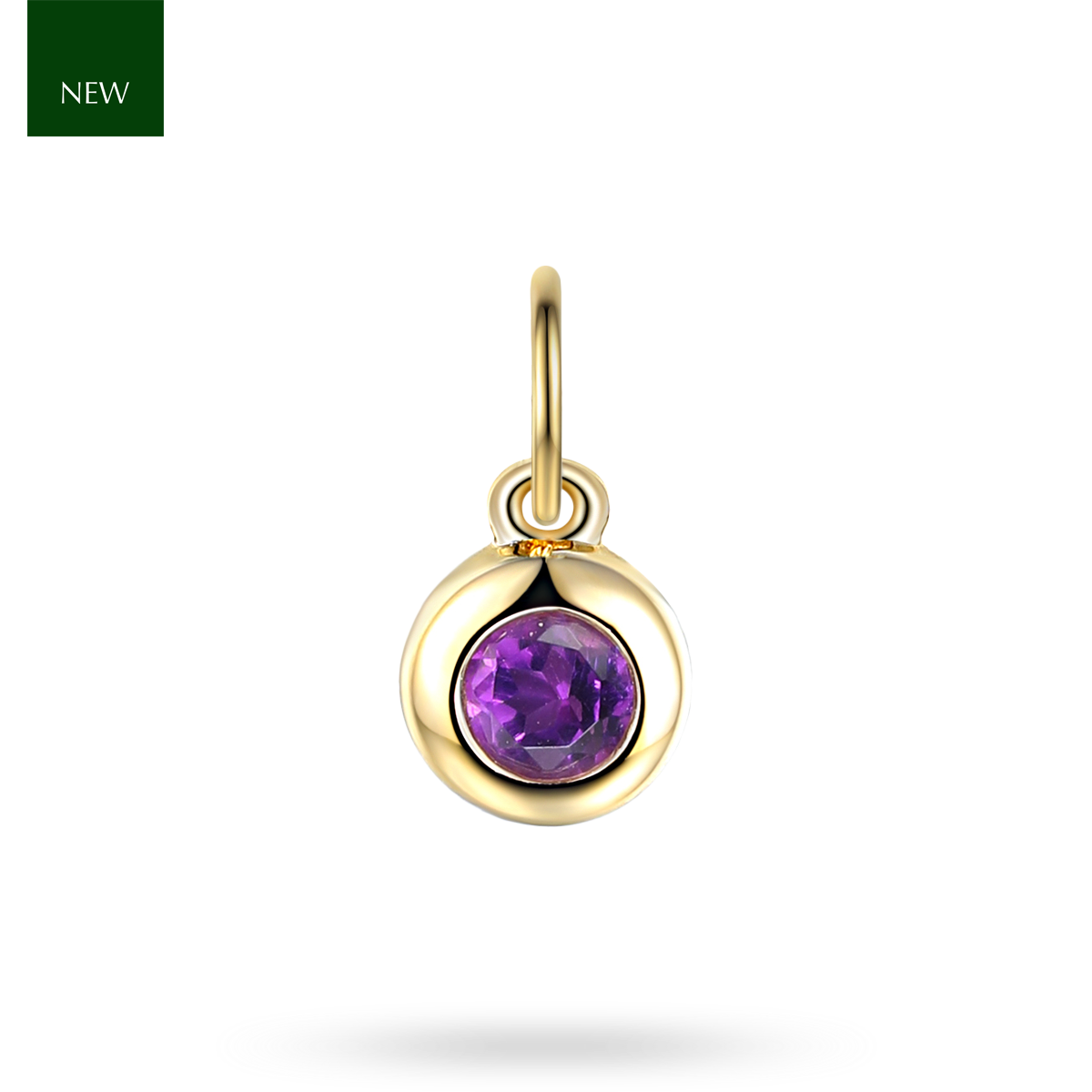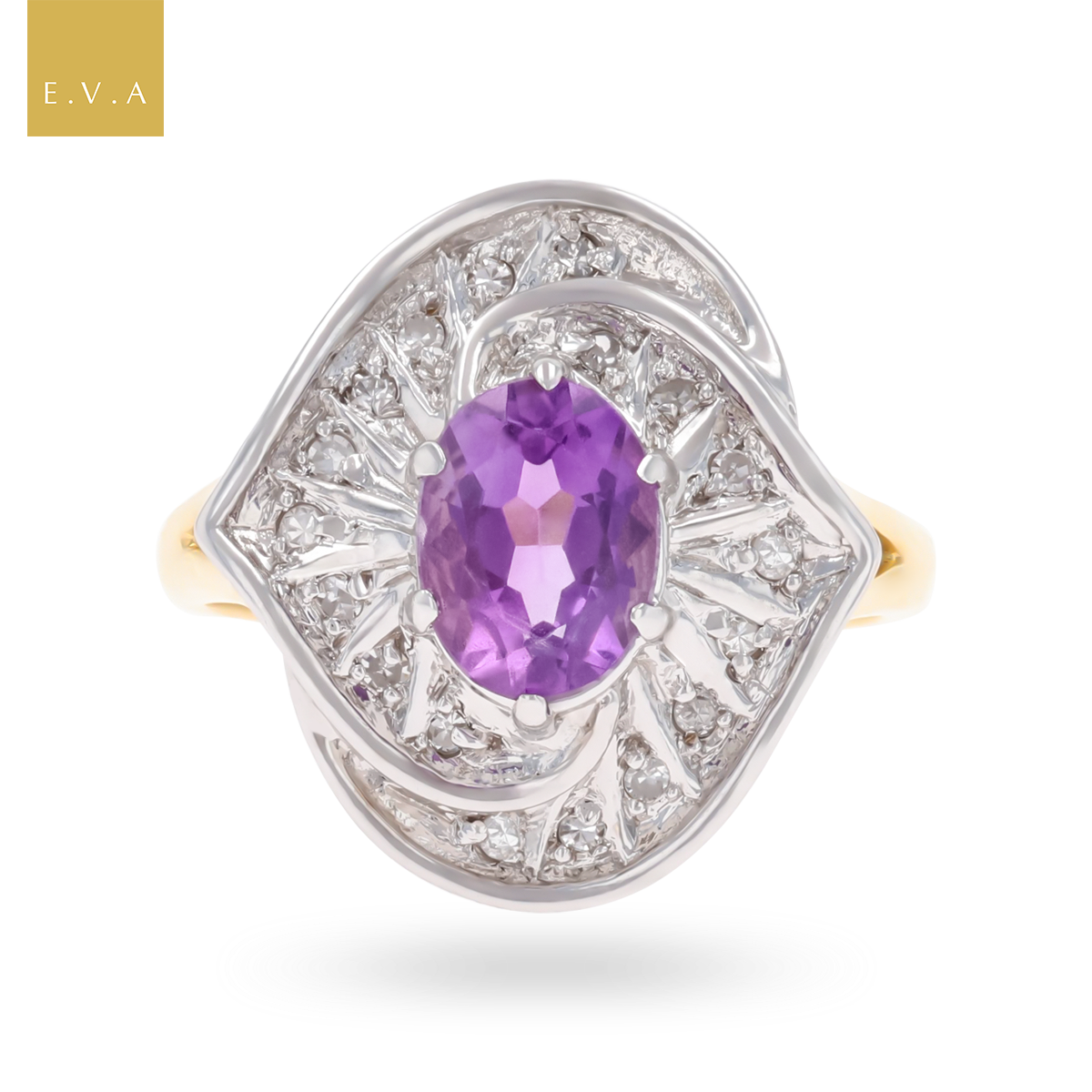The Colour Purple
What is Amethyst?
Amethyst, is the purple variety of the quartz family, which has a composition of silicon dioxide and falls under the crystalline group. In its rough crystal form, the body colour is infrequently consistent and is most often, concentrated in stripes, with straight edges or zones. Fashioned into faceted stones or cabochons, Amethyst possesses a range of shades: from deep purples with subtle red glints, to pastel lilacs with hints of blue. Depending on the saturation and intensity of colour, the gemstone ranges from transparent to translucent, and reflects a vitreous lustre.

Unmarked, Tested as 15ct Yellow Gold Amethyst Set Art Nouveau Pendant.
Crystal Habit
The gemstone crystallises with a prismatic crystal habit, which is classified under the trigonal crystal system. It forms a hexagonal shaped prism and therefore exhibits a hexagonal cross-section. The crystal is terminated with two sets of rhombohedra and is the particular location, for where the colour of the crystal is most saturated. The terminations of the crystal, is similar to that of a pyramid structure. The surface of the crystal, displays horizontal lines across the prism face, otherwise referred to as striations. If the crystal experiences a fracture or chip, the breakage would form concentric raised markings, which is known as a conchoidal fracture. The prismatic habit, commonly grows unevenly and forms a tapered structure, where it is wider at one end of the crystal than the other.

Alternatively, amethyst can crystallise as geodes, which are formed when hot silica-bearing solutions, permeate volcanic or sedimentary rocks, with gas holes. On cooling, the silica will slowly crystallise out, as geodes in the gas holes.
Localities of Amethyst
Amethyst can be sourced and mined from multiple localities around the world, such as: Brazil, Bolivia, India, Madagascar, Namibia, Russia (Siberia), Sri Lanka, Zambia and Zimbabwe.

Under The Loupe: Inclusions
Amethyst has magical and diagnostic inclusions, such as: straight colour-zoning, tiger stripes (ribbon like rows of partial healing along twinning planes), crystals, two-phase and partially healed fractures.

Treatments
Amethyst when heated will turn yellow, into Citrine and from certain sources even turn light green, which is referred to as Prasiolite. It is important to acknowledge, that heating is a traditional and widely accepted, permanent treatment.
Citrine with small amounts of Iron (Fe) present, can be irradiated to Amethyst, this is a non-permeant treatment and the colour will fade, if exposed to strong light over time.

Synthesis & Simulants
Quartz can be synthesised via the hydrothermal method and is generally grown colourless, in large quantities for industrial use. Synthetic citrine and synthetic amethyst, are lab grown in Russia and Japan. Although, difficult to distinguish, the diagnostic inclusions present in natural gemstones, are usually absent.
Amethyst can often be mistaken for purple artificial glass, scapolite and synthetic amethyst. These can all be identified through the use of gemological testing and observations.

The Lore of Amethyst
Amethyst is the material used to celebrate the 6th wedding anniversary, as well as being the birthstone of February, it is also the zodiac birthstone of Aquarius. Amethyst, derives from the Greek word ‘amethystos’, which translates to ‘not drunken’. The ancients greeks believed the stone to behold the power, of preventing intoxication. In ancient Persia, if Amethyst was carved into the sun, it was believed to deflect witchcraft. The symbolisation of protection, has evolved in recent years, to being associated with healing and peace, frequently used in meditations techniques.

Care
Amethyst, Crystalline Quartz: 💎 Hardness: 7 | 💪 Toughness: Good | ⚖️ Stability: Good
♥️ Extreme Caution, ⚠️ Avoid: 💡 Light, 🔥❄️ Thermal Shock / Extreme Temperature Change, 🌪 Steam Cleaners.
💛 Mild Caution, ⚠️ Avoid: 💦 Solvents (💅 Nail Polish Remover), 🧪 Acids / Detergents / Chemicals, ☀️🔥 Heat, 🔊 Ultrasonic.
🔬 Gemmological Observation: Avoid leaving Amethyst in strong light/heat, as colour may fade, with prolonged exposure. Quartz is pyroelectric, this means that when the gemstone experiences a change in temperature (for instance heat from the sun/lighting) it causes a low-level electrical attraction to fine dust particles. Therefore, you may experience that any quartz-set jewellery may need frequent cleaning.

Explore our Wordfinder, A Glossary of Terms, to discover the meaning behind unknown names, terms or phrases - used in this article.









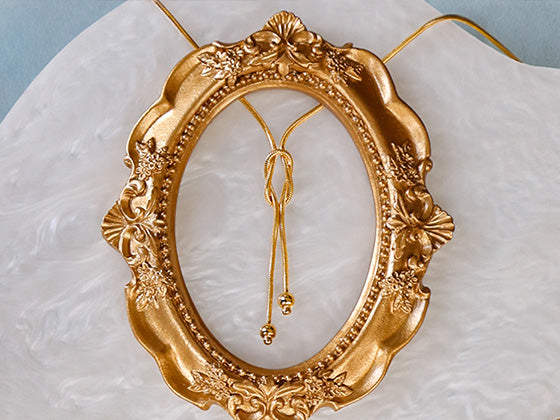



 Contact Us
Contact Us












